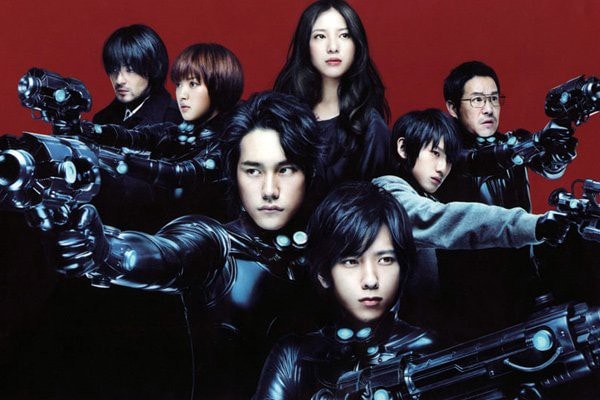
Finsterworld begins by setting up several seemingly unconnected storylines. Over time, they begin to overlap and eventually collide.
Each story delves deeply into the emotional life of its characters. The stories are uncomfortably intimate. We encounter the various characters in both public and private spaces, where we see them move from unguarded and vulnerable to performative and social. The scenes have the tense discomfort of a Todd Solondz film, but without the humor.
Director Frauke Finsterwalder, unlike Solondz, underlines all of the emotional drama with a layer of moral and political struggle. Finsterworld could only have been made in Germany. There is an intense gravity at the core of the film that summons a brooding and tortured pall. A film like this requires a willingness to not only seek out the darker side of the human psyche, but an ability to stay in the darkness and steep in it.
It is not evident at first, but the film is haunted by the Holocaust. There are no swastikas or flashbacks of starving Jews in stripes, but it is all there under the surface. The film takes place in the present (2013), and although there are characters of various ages, all of whom were born after the war, the Holocaust is still lingering. The characters share a heavy cultural heritage that undermines and disorients them. They cannot understand the enormity of the past, and so have no starting point to ground them.
The film’s structure itself reflects their disoriented state. Finsterwalder deftly cuts from one arc to another, challenging us to keep up. It takes a while before we get the gist of the separate stories. Each time Finsterwalder switches, we have to reacclimate to a different set of characters and circumstances. These people are trying to find meaning by stringing together the events of their lives, and since we don’t have a lot of information, we end up joining them in their search.
The separate stories become jigsaw puzzles that slowly develop and then hint at the way they might fit into the larger overarching puzzle of the film. Finsterwalder carefully considers each piece and allows us to ponder more than one way for them to fit together.
I am speaking in generalities so as not to ruin the film for potential viewers, but I will take a moment here to describe one scenario. There is a scene where a class of what appear to be high-school seniors visit a concentration camp with their history teacher. We get to know four students in particular, as well as the teacher. Two of the students are bullies. The very handsome blonde boy is a cold, sociopathic manipulator accompanied by his skinny, little toadie. The other two students are bookish and somewhat introverted, but the female of the two exchanges bitter banter with the bully.

None of them, including the teacher, know how to react to the camp. The teacher pleads with the students to face the shame and horror of their heritage, but he just seems melodramatic and the students pay no attention to him. The students wander around unsure of what it all means and what they are meant to be experiencing. The camp and its history are impossible to comprehend.
We follow the bookish teenage girl into a room that contains a line of ovens. It’s all cleaned up and blank, almost as if nothing happened. She goes over and opens an oven door. As soon as she leans in to look, the bully and his toadie appear from behind and shove her in. They lock the oven door and run off. It is a brutal scene that brings the Holocaust to life in a uniquely horrific way. We hear her screaming and kicking as she tries to get out, and then our minds begin to make the connections. This must have been what it sounded like. The camera just sits still while it films a visually still scene, but the muffled pounding at the iron door and panicked wailing are almost unbearable. Her being trapped in the oven is not only like what happened to the Jews, but it is also a representation of the German psyche trapped by a horror that will not allow it to move forward.

Later, when the history teacher finally walks into the room and hears sobbing coming from inside the oven, we can only imagine what is going through his head. Is it a ghost? A hallucinogenic echo from the past? Have the ovens absorbed so much pain and sorrow that now they weep?
The beautiful blonde bully becomes an image of Aryan terror, enjoying his ability to manipulate those around him. He will go on to commit other atrocities later in the film. As the different stories collide, everything gets worse. The film slowly darkens, inexorably sinking into dreadful despair.
Theodor Adorno famously said that “poetry is impossible after Auschwitz.” It seems that Finsterwalder has substituted the word “poetry” for “meaning.” There is a whole generation of postwar German artists who had to contend with this inheritance. Werner Herzog made films like Aguirre, The Wrath of God to explore how power operates. Anselm Kiefer made gigantic paintings of burned and baron landscapes to address the nation's loss of innocence and hope.

As an artist, Finsterwalder uses an avatar to place herself in the film. She is represented by a young documentary filmmaker. Finsterwalder had been a documentarian up until making Finsterworld. In Finsterworld, her character can’t seem to find a meaningful subject matter. The people she interviews are numb and disconnected. She is looking for something beautiful and cannot find it. In the meantime, her marriage is falling apart. Neither she nor her husband understands who they are or what they want. Her husband has found some amount of solace in the furry community, but when he reveals it to his wife, she is disgusted.

Finsterworld is about rudderless people struggling to find meaning in their lives. A meaning that will show them a way forward. However, it seems that their country’s past has undermined the foundations they are trying to build on. It is not that their past is holding them back, it is that there is no stable place to lay the cement. Their shared past is too monstrous to comprehend, and so leaves them disoriented. To chart a trajectory, you need a starting point, and they can’t seem to find one.

If you liked this article you might also like - https://filmofileshideout.com/archives/ildiko-enyedis-on-body-and-soul/



